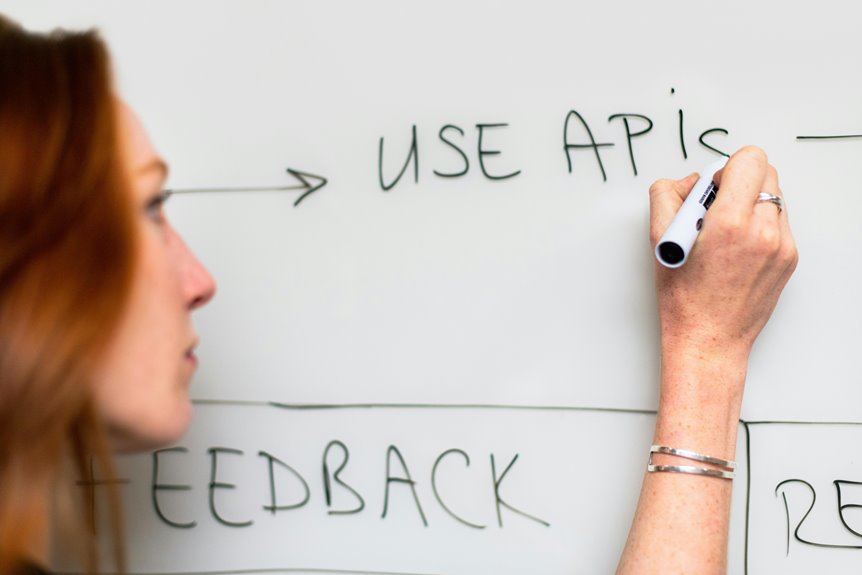Developing Agile Workflows 3245660738

Developing Agile workflows requires a nuanced understanding of collaborative principles and adaptive practices. Teams benefit from frameworks that encourage iterative progress and continuous feedback. By integrating tools that enhance transparency and accountability, organizations can navigate changing requirements more effectively. Yet, the journey does not stop there. Exploring the key elements that contribute to successful Agile implementation can reveal deeper insights into fostering resilience and value in project management.
Understanding Agile Methodologies
Agile methodologies emerge as a dynamic framework designed to enhance collaboration and adaptability in project management.
Through Agile frameworks like Scrum methodology and Kanban principles, teams embrace Lean practices and utilize user stories to drive progress.
Agile coaching fosters growth among cross-functional teams, while Agile ceremonies facilitate continuous improvement.
This iterative approach allows for flexibility, empowering teams to respond to change with confidence and creativity.
Key Principles of Agile Workflows
Several key principles underpin Agile workflows, shaping how teams collaborate and adapt throughout projects.
Embracing an agile mindset fosters a culture of continuous improvement and enhances value delivery.
Essential principles include:
- Prioritizing customer collaboration over contract negotiation
- Encouraging adaptive planning to respond to change
- Fostering self-organizing teams for empowered decision-making
These tenets ignite creativity and resilience, allowing teams to flourish in freedom and innovation.
Implementing Agile Practices in Your Team
Implementing Agile practices within a team requires a focus on enhancing collaboration, fostering iterative development, and embracing continuous improvement.
By adopting effective team collaboration techniques, members can ensure that feedback is integrated promptly, promoting adaptability in their workflows.
This approach not only streamlines processes but also encourages a culture of ongoing refinement and learning.
Team Collaboration Techniques
Effective team collaboration techniques are essential for fostering a productive Agile environment.
By prioritizing strong team dynamics and fostering open communication, teams can thrive.
Key approaches include:
- Engaging in brainstorming sessions for idea generation
- Establishing feedback loops for continuous improvement
- Emphasizing role clarity to enhance decision-making and conflict resolution
These strategies build trust and promote effective problem-solving, creating a space for freedom and creativity.
Iterative Development Processes
Building on strong team collaboration techniques, iterative development processes play a pivotal role in the Agile framework.
By leveraging user feedback through sprint reviews and refining the backlog, cross-functional teams can effectively prioritize user stories and plan iterations.
This approach facilitates the delivery of product increments, enhances stakeholder engagement, and strengthens risk management, all while maintaining a flexible mindset essential for successful release planning.
Continuous Improvement Practices
Embracing continuous improvement practices is essential for teams seeking to enhance their Agile methodologies.
By fostering an environment of collaboration and adaptability, teams can leverage feedback loops for effective process optimization.
Key aspects include:
- Encouraging open dialogue
- Regularly reviewing workflows
- Celebrating small successes
These practices empower teams, instilling a sense of freedom to innovate and grow, ultimately leading to better performance and satisfaction.
Tools and Technologies for Agile Development
In exploring the tools and technologies essential for agile development, teams can enhance their workflows and collaboration.
By examining various platforms that facilitate communication and task management, as well as the role of automation in streamlining processes, organizations can adapt to changing project needs effectively.
This discussion will provide insights into optimizing agile practices with the right resources.
Essential Agile Tools
A variety of essential tools and technologies underpin agile development, facilitating collaboration and enhancing productivity across teams.
These tools enable seamless project management and empower teams to thrive:
- Streamlined backlog management for effective task prioritization
- Agile tracking to monitor progress and adapt swiftly
- Workflow visualization to clarify processes and foster communication
Such essential agile tools pave the way for dynamic, responsive teamwork.
Collaboration Platforms Overview
Collaboration platforms play a pivotal role in agile development, fostering real-time communication and cooperation among team members.
These collaboration tools enhance project management by allowing teams to share updates, documents, and feedback effortlessly.
By embracing adaptable workflows, team members can iterate on tasks, ensuring that every voice is heard.
This environment of freedom encourages creativity and innovation, essential for successful agile practices.
Automation in Development
Automation transforms the landscape of agile development by streamlining repetitive tasks and enhancing efficiency.
Embracing automation offers teams a pathway to freedom, yet presents challenges that require careful navigation.
- Increased productivity and innovation
- Enhanced focus on creative problem-solving
- Potential resistance to change
Recognizing both automation benefits and challenges fosters a collaborative spirit that propels agile teams toward continuous improvement and adaptability.
Measuring Success in Agile Workflows
How can organizations effectively gauge the success of their Agile workflows?
By defining clear success metrics and identifying relevant performance indicators, teams can collaboratively assess their progress.
Iterative evaluations allow for adaptive decision-making, encouraging a culture of transparency and accountability.
Engaging all stakeholders in this process fosters a sense of ownership, ultimately leading to a more flexible and responsive work environment.
Continuous Improvement and Adaptation
Continuous improvement and adaptation are essential principles within Agile workflows, allowing organizations to respond dynamically to changing needs and challenges.
Embracing these concepts fosters a culture of innovation and collaboration:
- Empower teams through effective feedback loops
- Encourage creativity in process optimization
- Celebrate incremental successes and learnings
This iterative approach cultivates an environment where freedom and adaptability thrive, leading to sustained growth and resilience.
Conclusion
In conclusion, developing Agile workflows not only transforms project management but also coincidentally fosters a culture where teams thrive on collaboration and adaptability. As teams iteratively embrace Agile methodologies, they discover that enhanced communication and transparency lead to better decision-making and increased value delivery. This cycle of continuous improvement aligns perfectly with the Agile mindset, proving that the journey toward excellence is as important as the destination, ultimately creating resilient teams equipped to navigate change effectively.



